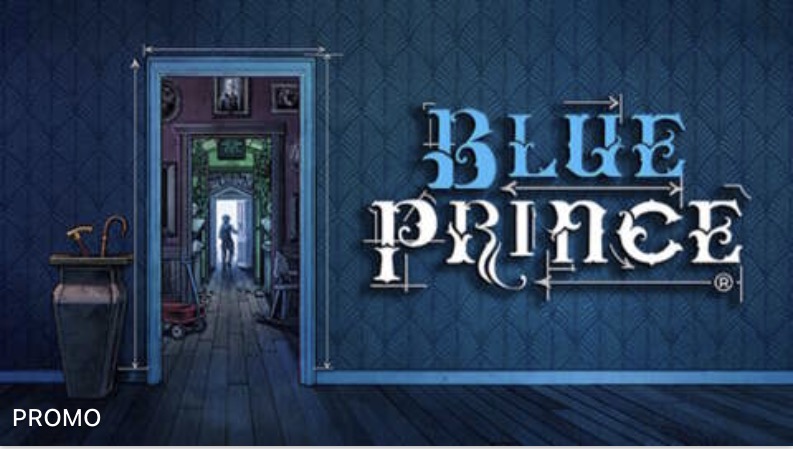It’s been 15 years since Skate 3, and a lot has happened in the skateboarding game genre since. The Tony Hawk series entered an experimental phase with mixed results, including a physical board controller and the ill-fated Tony Hawk’s Pro Skater 5, until jumping into the modern remake trend throughout the past five years. Meanwhile, multiple independent studios took a stab at the genre while catering to different audiences–Session: Skate Sim and Skater XL experimented with independent foot control schemes with an emphasis on physics to emulate realism, for example, while the OlliOlli series took a more arcade approach via a 2D perspective.
But amidst all of this, the absence of the EA series was felt. A decade after Skate 3, developer Full Circle, a team that includes series veterans such as Deran Chung and Chris “Cuz” Parry, announced Skate. Not Skate 4, but Skate–a free-to-play, live-service take on the game that’s launching in early access on September 16. After a virtual press briefing, I got access to a preview build that served as an introduction to not just what will be available at the start of early access, but the new vision for the series. It’s a vision that’s placing a big bet on fostering a community made of newcomers and veterans, while also intersecting with the industry trends that have overtaken online games in Skate’s 15-year absence.
Skate takes place in San Vansterdam, a fictional and sprawling city composed of four districts. Your story begins at an odd time to be shredding in those streets–once a haven for fellow skaters, the nicknamed locale San Van has been taken over by the corporate conglomerate M-Corp, and the people are trying to reclaim the city for themselves. In a similar fashion to past entries, the story doesn’t have a big presence and is mostly there to introduce the world and give your skater a narrative framework for why you’re taking on the so-called tours, which are a series of challenges and short missions meant to teach you tricks and new mechanics.
The city’s introduction and the characters you meet set the tone of Skate, which, at this point in time, sorely lacks a strong identity. The fellow skaters you speak to are the embodiment of Steve Buscemi’s “How do you do, fellow kids?,” without the purposeful irony or comedy that was hinted at in some promo videos, such as 2024’s trailer featuring comedian Tim Robinson of I Think You Should Leave fame, which doesn’t seem to be present in game. Outside of missions, there’s a bot named Veep that often shares history snippets about the city, suggests activities, and comments on your actions, but without a strong personality encouraging you to pay much attention. The presence of technology serves as a comment on M-Corp’s influence over the city, which is presented as a gentrified and homogenized setting, clashing against your own expression as a skater native to the region.
At the moment, there’s little sense of resistance or a strong storyline that dives into these dueling forces. It’s a far cry from, say, Watch Dogs 2, despite Skate wanting to riff on a similar storyline and tone with the colorful aesthetic for its menus and pushing for the player to express themselves via character customization (the latter falling short on account of the range of options only featuring a fairly simple set of body and hair options).

But again, the story is far from the focus of Skate and is mostly there to give you a mission structure and a path to follow to unlock challenges across the districts. The core of the experience is in the skating itself, and for the most part, it feels good. The Flick-It system is back, in which you “draw” gestures on the right analog stick to perform tricks. There are new additions to it, including more late tricks–such as laserflips–and different ways to approach certain maneuvers. For example, you can do a flip and hold the trick, which will repeat it indefinitely while you’re in the air, while also controlling the speed of some tricks to perform them slower or faster. The trick repertoire is decent enough, including the usual suspects such as Christ Air, but during the briefing, Full Circle said that it plans to bring back more tricks present in previous Skate entries through updates in the future, as well as introduce new ones.
The most noticeable difference in feel and flow in Skate comes from its ragdoll effects. This has always been a factor in the series, but past entries also had a distinct weight to your actions, scratching that realism itch by forcing you to calculate speed, height, and distance for every trick you make. This is largely replicated in Skate, but locomotion is a bit floaty, which is frustrating when tackling difficult tricks. During Line challenges, where you must collect bearings along a set path without getting off your board, I’d often skate very slowly after pulling off the tricks I needed in order to finish the line without colliding into a bench or a curb, which could often cause a bigger impact than it normally would and cause my skater to fall.
While the Flick-It system remains present and there’s a vast opportunity for mastering its more technical aspects, Skate’s introduction of parkour and air tricks adds a more arcade-style element that is often in conflict with its more traditional foundations. Tricks like Spread Eagle aren’t new to the series, nor is gaining enough speed before a ramp or structure incline to perform airborne stunts. But there’s a bigger emphasis on challenges that don’t involve much skating, and instead task you to, say, jump off the top of a skyscraper and hit different environmental objects or land inside an empty bin. The parkour is serviceable enough, and adds a sense of verticality, as there are climbable spots on pretty much any tall structure. But these components make for a different Skate experience.


At the very least, there’s a push for challenge variety, which is definitely needed for the game’s progression, since missions are locked behind challenges. At least in the preview build, one of Act 3’s missions required 375 challenge points to access it. For the most part, challenges can reward up to three to five challenge points each, depending on the difficulty tier. Most missions require you to tackle challenges, so you’ll be obtaining them in tandem as you progress through the story. Until you inevitably hit a wall, that is, and you’ll have to backtrack to clean up challenges across districts. There’s just enough variety for them not to get too stale, mostly due to the fact that there are quite a few challenges related to parkour and air maneuvers rather than skating (some mix the two). Yet, they can feel repetitive when done in quick succession.
It’s important to note that almost all of my time playing Skate was on my own. The live-service approach means that San Vans is supposed to act as a shared space for other people via multiplayer. It was hard to get a feel for how this premise will come together, as lobbies have a 150-player capacity. The size of San Vansterdam is spacious enough as is, and it seems designed in a way that it could strike a good middle ground once there are over 100 players together, giving you the chance to bump into other people often.
In the preview build, I encountered fewer than 10 players scattered throughout multiple sessions. At least one series of quests revolved around social activities, which, while not that common, could hint at some progression blockers depending on server activity. It’s a shame, since the brief experiences I had with other players were more snappy, with the two of us contributing to the goals together. I can see how the challenge grind becomes more amicable with company, but there are also drawbacks. If either of you fails a line while the other person aces it on a first try, they have to wait for the other person to run the course again until they manage to complete it. This largely depends on the challenge type, and normally, you don’t need to tackle every single objective to complete it, and can just exit it whenever and cash in the points you’ve gotten up to that point instead.


There are players who will be content with skating around with other people. If you’re interested in the fashion and expression aspect of Skate, which has always been part of the series and skating culture in general, challenges are one of the two ways of getting fresh clothes and accessories. The other is, well, by paying with real-life cash. Completing missions and challenges within a district rewards you with experience, as well as the occasional clothing item. When hitting certain level milestones, you get access to in-game rewards like fast-travel points, but also new tiers of Product Boxes, which are essentially loot boxes.
Product Boxes aren’t up for sale–paid clothing options will be available to purchase either as single items on a time-limited rotation, or as bundles–but still function on a chance-based system. For example, I wanted to get a skeleton onesie that is split into multiple parts, and that required me to not only get fairly high levels across multiple districts to gain access to each one of them, but once I got there, I’d then have to spend points on Product Boxes until I finally got each part, rather than being able to select them from an NPC vendor. It doesn’t help that most missions rewarded me with frankly boring clothing options. Getting a “rare white tight tee” didn’t feel like much of an achievement.
Speaking of style and expression, the soundtrack is also in an odd spot. Full Circle said that the track list will evolve over time, with the team introducing new songs in upcoming seasons. At the moment, there’s a decent selection of licensed tracks from artists like Turnstile, MF Doom, and Sunny Day Real Estate, to name a few. But the vast majority of the soundtrack is made up of royalty-free songs. This dissonance is even more pronounced with the Grabbster feature, which allows you to get close to a speaker and “grab” a song to add it to your playlist, since there’s always a chance of you getting an unlicensed track instead.


Full Circle expects Skate to be in early access for about a year, although its roadmap isn’t set in stone. The first season is coming a couple of weeks after the early access launch, which will also introduce a season pass. As it stands, Skate feels more in line with games like Fortnite, presenting an aesthetic and sense of style that is meant to be shaped by seasonal content rather than introducing a strong sense of identity from the get-go. Full Circle was vague about concrete plans, but the team isn’t ruling out collaborations with more brands and other IPs.
In just a few weeks, Skate will begin navigating a myriad of expectations, and it’s unclear which ones the development team will pay closer attention to during the early access period. From my time with it, Full Circle’s intentions seem to want to open the doors to newcomers as well as welcome back the people who’ve been waiting for a new Skate game for the past 15 years. As it stands, this foundation looks and feels different–it’s a rather brand-safe take on skating, and some of the new mechanics can feel disruptive. Whether it’ll succeed in striking the balance and stay on course remains to be seen.
Skate will be available free-to-play on September 16 on PlayStation 4, PlayStation 5, Xbox One, Xbox Series X|S, and PC, with a mobile version for Android and iOS to follow at a later date.









